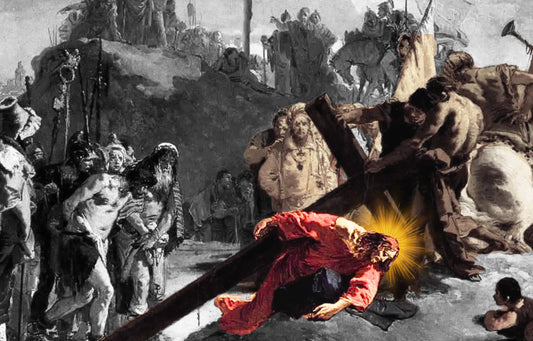Cotton, a fabric we often take for granted, has a rich and complex history that spans thousands of years. From its early cultivation in ancient civilizations to its role in global trade and politics, cotton has been a significant player in shaping economies and societies. This article explores the fascinating journey of cotton, highlighting its impact on trade, politics, and industry throughout history.

Key Takeaways
- Cotton's origins trace back to ancient India, Mexico, and Peru, where it was first cultivated over 6,000 years ago.
- The spread of cotton to Europe was significantly influenced by Alexander the Great, Greek and Roman traders, and later Arab merchants.
- The Industrial Revolution in Great Britain revolutionized cotton production, with inventions like the cotton gin drastically increasing efficiency.
- In the United States, the cotton industry was deeply intertwined with the economy and the institution of slavery, leading to significant social and economic impacts.
- Modern cotton production faces challenges such as sustainability issues and market dynamics, but it remains a crucial global industry.
Ancient Beginnings of Cotton

Early Cultivation in India and Mexico
Cotton has been grown for thousands of years. In India, people started growing cotton around 4000 BC. In Mexico, cotton farming also began very early. The oldest cotton textiles were found in graves and city ruins of civilizations from dry climates, where the fabrics did not decay completely.

Cotton in Ancient Peru
In Peru, cotton was used even earlier. The oldest cotton fabric ever found was in Huaca Prieta, dating back to around 6000 BC. This shows that ancient Peruvians were already skilled in making cotton textiles.
Trade Routes and Early Commerce
Cotton was not just grown; it was also traded. Early trade routes helped spread cotton far and wide. It was traded throughout the Mediterranean Sea to meet the demands of the nobility. This early commerce set the stage for cotton to become a major trade item in later years.
Cotton's Journey to Europe
Alexander the Great's Influence
Cotton's status as a luxury good in Europe began with Alexander the Great's invasion of India in 327 BC. This event introduced cotton to Greek and Roman merchants, who started trading it with India. Initially, cotton was reserved for the nobility among the Greeks and Romans.
Greek and Roman Trade
Greek and Roman merchants played a crucial role in spreading cotton. They traded cotton with India, making it a highly prized textile. However, it was not common in Europe and remained a luxury item for a long time.
Arab Traders and the Spread of Cotton
Arab traders significantly contributed to the spread of cotton in Europe. By the 1st century AD, they had established cotton as a functional material for everyday clothing. During the early Middle Ages, Italians developed their own cotton industry through trade with Arab countries. Northern Italy became a hub for cotton fiber production between 1000 and 1300 AD. They created a blended fabric called Fustian, which combined linen and cotton, offering a robust and versatile fabric at a relatively affordable price.
The introduction of cotton to Europe was a gradual process influenced by various cultures and traders. From Alexander the Great to Arab merchants, each played a part in making cotton a valuable commodity in Europe.
The Industrial Revolution and Cotton
The Industrial Revolution marked a turning point for the British cotton industry. By the middle of the 19th century, Britain was producing half the world's cotton cloth. This was remarkable considering that not a single scrap of cotton was grown in Britain. The growth of cotton manufacturing soon made it the center of the British economy. In 1770, cotton manufacturing made up just 2.6% of the value added in the economy. By 1801, it accounted for 17%, and by 1831, 22.4%. This compared to the iron industry’s share of 6.7%, coal’s 7%, and woolen’s 14.1%. The rise of cotton manufacturing was a major driver of wealth and employment, contributing to social stability.
Technological Innovations
The Cotton Gin

The invention of the cotton gin by Eli Whitney in 1793 revolutionized the cotton industry. This machine made it much easier to separate cotton fibers from their seeds, greatly increasing the efficiency of cotton processing. The cotton gin enabled large-scale production and propelled the industry forward. The versatility and dexterity of cotton as a raw material proved increasingly valuable, leading to the development of new production techniques and the creation of luxurious velvet. Unlike silk, velvet could be produced more affordably, and its printing process was much easier than that of wool.
Cotton Press

Early wooden presses were among the first mechanical devices used to compress cotton into compact bales for efficient storage and transportation. The Latta Cotton Press, built around 1798, serves as an excellent example of these early mule-powered wooden presses. It featured a 16-inch diameter oak screw that was hand-chiseled, demonstrating the craftsmanship of the era. The press was protected by a small rectangular, shingled hip roof and supported by four beams forming a pyramidal frame. Two long shingled booms, aptly nicknamed "buzzard wings," extended from the machine and were used to harness the power of mules or oxen to rotate the screw and compress the cotton.
Economic Impact and Employment
The impact of these advancements extended beyond manufacturing and commerce. The textile industry's growth and the accessibility of cotton products resulted in significant cultural shifts and social changes throughout Britain. The availability of affordable textiles revolutionized clothing and fashion trends, democratizing access to stylish garments. People from all walks of life could now enjoy the comfort, durability, and aesthetic appeal of cotton, symbolizing a more egalitarian society. The British Empire recognized the immense value of cotton and took significant measures to ensure its competitive advantage over other nations. To achieve this, the empire made substantial investments in cutting-edge technology, aiming to streamline production processes and achieve large-scale output. Additionally, to safeguard its dominance and counter potential rivals such as India, Britain implemented protectionist policies to restrict imports while simultaneously pressuring the Indian market to open up to British goods.
Cotton and the American Economy

The Role of Slavery
The American cotton industry grew rapidly in the 1800s, but it came at a high cost. Slavery was central to this growth. Enslaved people were forced to work long hours in harsh conditions to meet the high demand for cotton. This labor system was not only cruel but also essential for the profitability of cotton plantations.

King Cotton Era
By the 1830s and 1840s, cotton had become so important to the American economy that people started calling it "King Cotton." During this time, the U.S. produced two-thirds of the world's cotton. This era saw the rise of large plantations and significant wealth for plantation owners, but it also deepened the reliance on slave labor.
Post-Civil War Changes

The Civil War brought significant changes to the cotton industry. After the war, slavery was abolished, and the South had to find new ways to produce cotton. Sharecropping became common, where freed slaves and poor whites would farm land in exchange for a share of the crop. While this system was better than slavery, it still trapped many in a cycle of poverty.
The U.S. cotton industry accounts for more than $21 billion in products and services annually, generating more than 125,000 jobs in the industry sectors from farming to manufacturing.
Despite its dark past, the cotton industry remains a vital part of the American economy today.
Global Expansion and Colonialism
Cotton in British Colonies
The British Empire's hunger for cotton led to significant changes in its colonies. Local farmers were often forced into monoculture, growing only cotton instead of diverse crops. This shift made them dependent on the global cotton market, which could be unstable.
Impact on India
India was one of the British Empire's most important cotton suppliers. British policies, however, devastated India's traditional textile industry. The British flooded the market with cheap cotton goods, driving local artisans out of business.
Global Cotton Trade
Today, cotton is grown in over 70 countries, with China, India, and the United States being the largest producers. The global cotton trade is worth billions of dollars and involves complex supply chains that span the globe.
Bangladesh stands out as one of the world's most prominent garment exporters. The nation's garment industry, valued at $46 billion, serves as the primary export industry, accounting for 84% of the country's total export earnings in 2022. Bangladesh's garment sector directly employs over four million individuals, with women comprising 60% of the workforce, highlighting the industry's crucial role in providing employment and empowering marginalized communities. The country sources most of its cotton from global suppliers, with significant imports from the United States, India, and Brazil.
In contrast, the African continent represents a rapidly growing hub for cotton production. Several African nations, including Burkina Faso, Mali, and Benin, have emerged as major cotton producers and exporters. Cotton farming in these regions remains an essential driver of rural development, providing livelihoods to millions of smallholder farmers. However, challenges such as fluctuating global cotton prices, environmental concerns, and limited access to modern farming techniques and infrastructure persist. Efforts to address these challenges through sustainable farming practices and fair trade initiatives are gaining traction, with a focus on promoting social equity and environmental stewardship in African cotton-producing communities.
Sustainability Challenges
While cotton remains an important crop, it also faces sustainability challenges. Cotton farming requires a lot of water and often involves the use of pesticides. This has led to environmental concerns, particularly in regions where water is scarce.
Efforts to make cotton production more sustainable include developing organic cotton, which is grown without synthetic chemicals, and using more efficient irrigation methods. These initiatives aim to reduce the environmental impact of cotton farming and ensure that it can continue to be a valuable crop for future generations.
The global cotton industry is vast and complex, involving a range of stakeholders from small farmers to multinational corporations. As the industry continues to evolve, it will need to address the challenges of sustainability and social responsibility.
Conclusion
Cotton's journey through history is a story of innovation, exploitation, and resilience. From its humble beginnings in ancient India and Mexico to its role in the global economy today, cotton has had a profound impact on societies and economies. As we move forward, it is essential to address the sustainability challenges associated with cotton production to ensure that this vital crop can continue to play a positive role in our world.














